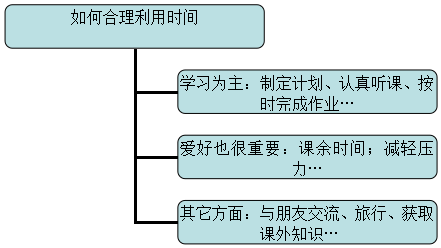7.The Cuban iguana is a species of lizard(蜥蜴)of the iguana family.It is the largest of the West Indian rock iguanas,one of the most endangered groups of lizards.This species with red eyes and a thick tail is one of the largest lizards in the Caribbean.
The Cuban iguana is primarily herbivorous; 95% of its diet consists of the leaves,flowers and fruits from as many as 30 plant species,including the seaside rock bush and various grasses. However,Cuban iguanas occasionally consume animal matter,and individuals have been observed eating the dead flesh of birds,fish and crabs,The researchers wrote that quite a few people on Isla Magueyes could have caused this incident.
The Cuban iguana is distributed throughout the rocky southern coastal areas of mainland Cuba and its surrounding islands with a wild population booming on Isla Magueyes,Puerto Rico.It is also found on the Cayman Islands of Little Cayman and Cayman Brac,where a separate subspecies occurs.Females guard their nest sites and often nest in sites half destroyed by Cuban crocodiles. To avoid the attack from them,the Cuban iguana often makes its home within or near prickly-pear cacti(仙人掌).
In general the species is in decline,more quickly on the mainland than on the outlying islands.One of the reasons for their decline is habitat destruction caused by t he over consuming of farm animals,housing development,and the building of tourist resorts on the beacheswhere the animals prefer to build their nests. Although the wild population is in decline,the numbers of iguanas have been sharply increased as a result of captive-breeding(圈养) and other conservation programs.
32.The underlined word"herbivorous"(Paragraph 2)probably meansC.
A.dangerous B.gentle
C.plant-eating D.flesh-eating
33.Why does the Cuban iguana build its nest near prickly-pear cacti?D
A.To keep itself cool.
B.To get the food easily.
C.To stay away from people.
D.To avoid crocodiles'attack.
34.How many reasons are mentioned for the habitat destruction?B
A.Two B.Three C.Four D.Five
35.What's the author's purpose of writing the text?A
A.To give us a brief introduction to the Cuban iguana.
B.To show he is concerned about the Cuban iguana.
C.To explain reasons for the Cuban iguana's decline.
D.To draw people's attention to the endangered Cuban iguana.
分析 本文主要介绍古巴大蜥蜴的种族分类,生活习性和筑巢习惯等等.就目前情况看来,因为栖息地被破坏古巴大蜥蜴的种类在逐渐减少.
解答 32.C.猜测词义题.根据95% of its diet consists of the leaves,flowers and fruits from as many as 30plant species,including the seaside rock bush and various grasses.可知古巴大蜥蜴的食物中95%都是叶子,花和水果等,说明它是食草动物.可猜出"herbivorous"意思是吃植物,故选C.
33.D.细节理解题.根据Females guard their nest sites and often nest in sites half destroyed by Cuban crocodiles.To avoid the attack from them,the Cuban iguana often makes its home within or near prickly-pear cacti (仙人掌).可知它把巢穴建在靠近仙人掌的地方是为了避免鳄鱼的袭击,故选D.
34.B.细节理解题.根据最后一个自然段根据第四段habitat destruction caused by the over consuming of farm animals,housing development,and the building of tourist resorts on the beaches where the animals prefer to build their nests可知the over consuming of farm animals,housing development和the building of tourist resorts on the beaches是造成栖息地破坏的原因,文中提到了三个原因,故选B.
35.A.写作意图题.本文介绍了古巴大蜥蜴的种族分类,习性和筑巢习惯等等,并说明因为种种原因它们的数量在减少.由此可见本文只是对古巴大蜥蜴的一个介绍,故选A.
点评 本文是一篇说明文,介绍了古巴大蜥蜴的种族分类,生活习性和筑巢习惯等等.要求学生根据文章所述事件的逻辑关系,对未说明的趋势或结局作出合理的推断;或根据作者所阐述的观点理论,对文章未涉及的现象、事例给以解释.考生首先要仔细阅读短文,完整了解信息,准确把握作者观点.



 学而优衔接教材南京大学出版社系列答案
学而优衔接教材南京大学出版社系列答案 小学课堂作业系列答案
小学课堂作业系列答案 金博士一点全通系列答案
金博士一点全通系列答案